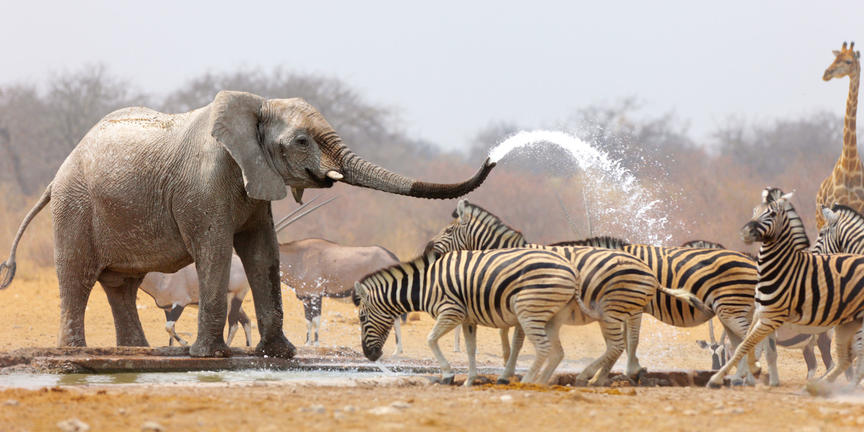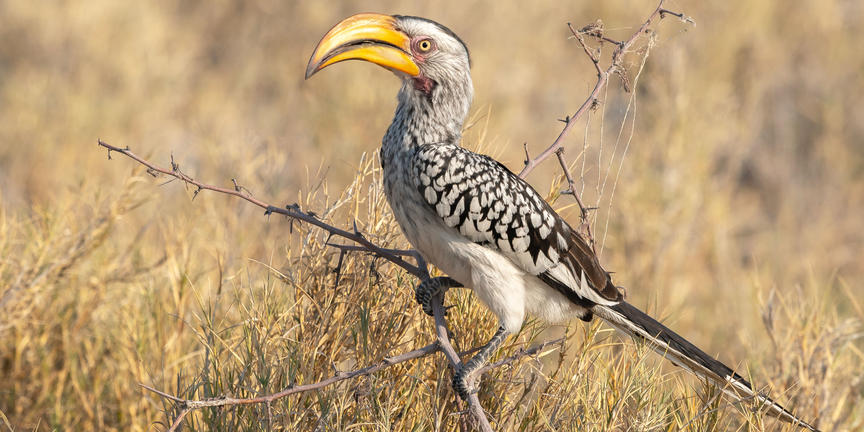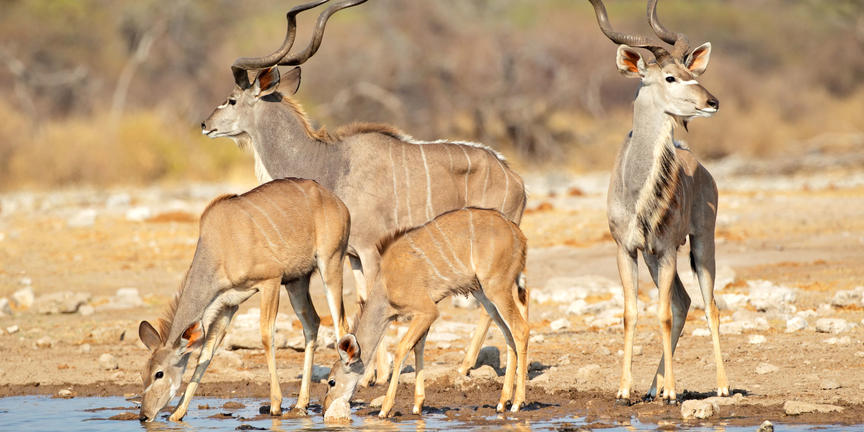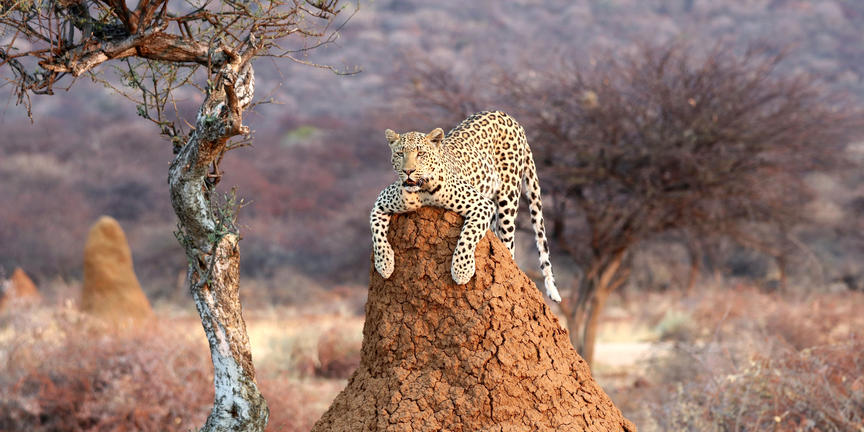Like everything in Namibia, the pan is ancient - 2 million years or so - and was formed when a great continental upheaval diverted the Kunene River towards the sea, leaving a massive inland lake that soon dried up. Usually a shimmering white horizon, the pan fills with water after a good rainy season and becomes a vast knee-deep lake.
About 30 springs and waterholes along the pan's southern edge attract large concentrations of every representative species in the park - especially in the dry season, which runs from April to September.
Wildlife you are likely to see, at close quarters if you spend some time at the waterholes, includes a growing number of rhino - both black and white - and the endemic black-faced impala and Damara dik-dik. The Namibian trademarks, gemsbok and springbok, are common and there are good numbers of southern Africa's big game including elephant, lion, leopard, cheetah, caracal, brown and spotted hyena, eland, roan, kudu, wildebeest, red hartebeest, Hartman's mountain (only in the west) and Burchell's plains zebra, and black-backed jackal.
Birding is excellent, particularly after good rains when up to a million flamingos may congregate in the pan. Etosha is one of only two places in southern Africa where blue cranes and greater and lesser flamingos breed. Raptors are common with 46 species recorded including the Bateleur, martial, Wahlberg's and tawny eagles; and Egyptian, African white-backed and lappet-faced vultures. Ostriches, secretary birds, kori bustards and black korhaans are easily spotted around the pan; and there are several specials including violet wood-hoopoe, Rüppell's bustard, Caspian plover, pygmy and red-necked falcons, three varieties of babbler and the pink-billed lark.





